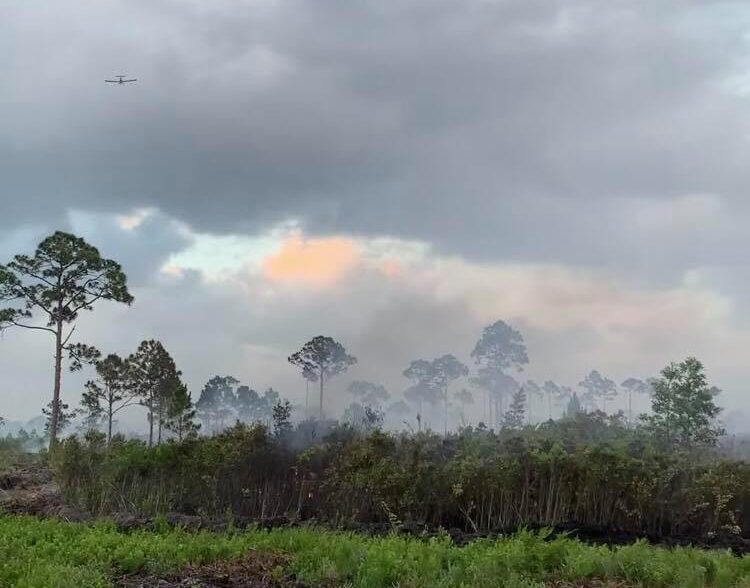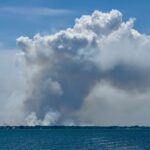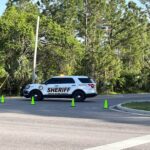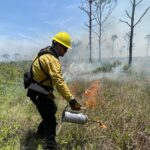
Update: Florida Forest Service officials said the wildfire that sparked at St. Sebastian River Preserve State Park – now estimated at 1,230 acres – was 60 percent contained as of Saturday evening.
Initial details that reported the blaze at 1,600 acres was an estimate, Forest Service officials said.
“The lower 1,230 acres is an accurate measurement of acres through utilization of mapping applications and GPS services,” Forest Service officials said. It was unclear if state firefighters planned to stay in the area overnight to battle the blaze, which ignited Friday morning.
No injuries or threats to structures were reported. Firefighters think the flames originated from an unattended camp fire, but an official cause has not yet been determined.
Earlier story:
Fire crews on Saturday continue to battle a 1,600-acre wildfire that they said might have been caused from an unattended camp fire. The official cause of the fire is still under investigation, officials said.
The blaze – which officials call the “Tree Frog Fire” – sparked Friday at St. Sebastian River Preserve State Park. One Florida Forest Service firefighter had a minor injury from the fire, officials said.
The flames were still 40 percent contained on Saturday, Forest Service officials said. Forest Service Mitigation Specialist Miguel Nevarez said it could be days before the fire is fully contained.
Nevarez said strong winds caused the blaze to grow rapidly in a short timeframe at St. Sebastian River Preserve State Park. The state park fire caused authorities to close Interstate 95 in both directions for several hours on Friday, affecting thousands of motorists.
Nevarez asked residents to be aware of the dry weather conditions. He also reminded motorists to not drive through tall grass because catalytic converters can spark fires.
In April, park officials conducted two prescribed burns at St. Sebastian River Preserve State Park. Nevarez said the prescribed burns kill of dead vegetation, which can be a fuel for uncontrollable wildfires.
“One of the main reasons why we do prescribed burns is to eliminate catastrophic wildfires,” Nevarez said. “The prescribed burns conducted in the area a couple months before provided us easier access points. This wildfire would’ve have been more intense without the prescribed burns.”






